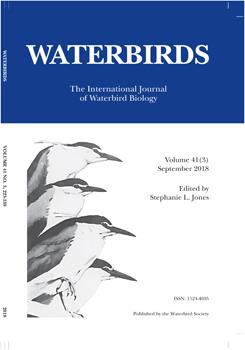Scant attention has been given to the molting patterns of known-age Double-crested Cormorants (Phalacrocorax auritus). In general, subadult individuals are identified with a tan, buffy or mottled chest, and adults are identified with a black chest. While studying Double-crested Cormorant population dynamics in Ontario, Canada, with known-age birds, it was noted that the plumage of many (> 75%) breeding adults changed from black to heavily mottled during the course of the breeding season. No pattern with age was observed; plumage changed in equal proportions for all ages from 2-year-olds to 7-year-olds. A similar but reverse pattern has been observed with Double-crested Cormorants roosting at sites in the southeastern USA during fall migration. Whereas the majority of the roost had juvenile/subadult plumage in September, by mid-January the roost had shifted to 75% adult black plumage. The mechanism behind the plumage change is unknown, but extreme caution is advised when using plumage to age cormorants, especially during the winter months. By describing our observations with Double-crested Cormorants, we hope to encourage future formal research on within-season plumage changes.
How to translate text using browser tools
1 September 2018
Plumage Changes in Double-Crested Cormorants (Phalacrocorax auritus) within the Breeding Season: The Risks of Aging by Plumage
Jennifer E. Chastant,
D. Tommy King
ACCESS THE FULL ARTICLE

Waterbirds
Vol. 41 • No. 3
September 2018
Vol. 41 • No. 3
September 2018
adult plumage changes
Great Lakes region
juvenile plumage
molting patterns
plumage aging
plumage characteristics




